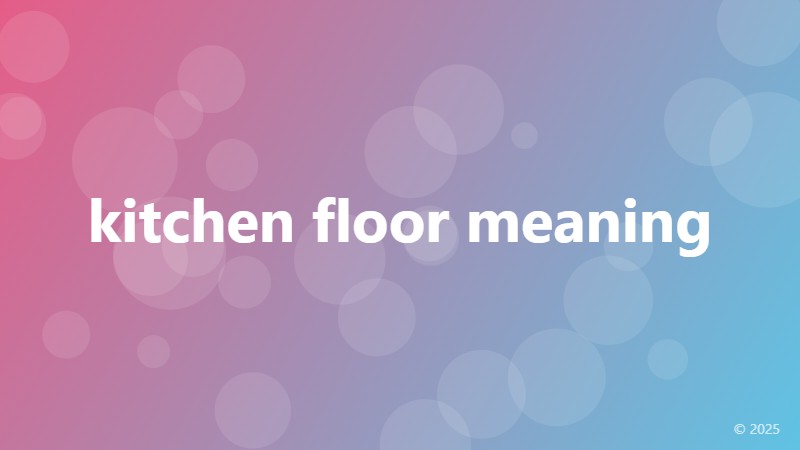kitchen floor meaning

The Significance of Kitchen Floor Meaning in Home Design
Kitchen floor meaning goes beyond just a physical surface where we prepare meals. It's an essential aspect of home design that not only affects the aesthetic appeal of the kitchen but also influences the functionality and overall ambiance of the space. In this article, we'll delve into the world of kitchen floors, exploring their meaning, importance, and design considerations.
Defining Kitchen Floor Meaning
Kitchen floor meaning can be understood on multiple levels. At its core, it refers to the physical material or surface that covers the kitchen floor, such as hardwood, tile, or laminate. However, it also encompasses the emotional and psychological connections we make with our kitchen spaces. A kitchen floor can evoke feelings of warmth, comfort, and nostalgia, making it a vital component of home design.
The Importance of Kitchen Floor Meaning in Home Design
A kitchen floor's meaning extends beyond its functional purpose. It sets the tone for the entire kitchen, influencing the color scheme, furniture, and overall style. A well-chosen kitchen floor can:
- Enhance the aesthetic appeal of the kitchen
- Influence the ambiance and mood of the space
- Affect the functionality and usability of the kitchen
- Impact the resale value of the property
A kitchen floor's meaning is also deeply personal. It reflects the homeowner's personality, style, and values. For instance, a rustic wooden floor may evoke a sense of warmth and coziness, while a sleek, modern tile floor may convey a sense of sophistication and elegance.
Design Considerations for Kitchen Floor Meaning
When designing a kitchen floor, it's essential to consider the following factors to ensure that the chosen floor aligns with the intended meaning:
- Lifestyle: Consider the daily activities and habits of the household members
- Personal style: Reflect on the homeowner's personal taste, preferences, and values
- Functionality: Assess the kitchen's functionality and usability requirements
- Budget: Determine the budget for the kitchen floor design and installation
By considering these factors, homeowners can create a kitchen floor that not only meets their functional needs but also resonates with their personal style and values, ultimately enhancing the overall kitchen floor meaning.
In conclusion, kitchen floor meaning is a multifaceted concept that encompasses both physical and emotional aspects of home design. By understanding the significance of kitchen floors and considering the design factors, homeowners can create a kitchen space that reflects their personality, style, and values, ultimately enhancing the overall kitchen floor meaning.